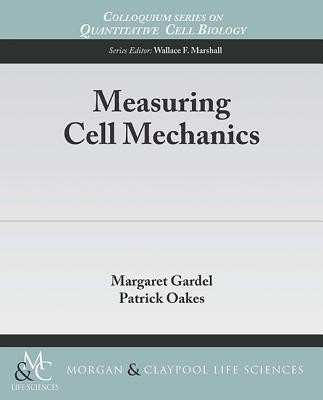
- We will send in 10–14 business days.
- Author: Margaret Gardel
- Publisher: MORGAN & CLAYPOOL
- ISBN-10: 1615046984
- ISBN-13: 9781615046980
- Format: 19.1 x 23.5 x 0.4 cm, softcover
- Language: English
- SAVE -10% with code: EXTRA
Reviews
Description
Cells are inherently physical entities that both experience mechanical forces from their external environment and generate their own internal forces to drive cell motion. Our particular aim here is to present the reader with an introduction to the primary tools used to measure these mechanical interactions and the material properties of cells that result from them. These approaches can be applied to a diverse array of physiological processes and systems, providing important insight into the regulatory roles of mechanical interactions in cells. We cover techniques at both the molecular and cellular scales, including those that actively and passively probe the system. Along the way we cover the fundamental principles of each approach, while emphasizing the relevant length and timescales, along with the typical magnitudes of the measurements that can be made. Each section ends by highlighting uses of the various techniques in recent relevant publications, illustrating the exciting future of cell mechanics in quantitative cell biology research.
EXTRA 10 % discount with code: EXTRA
The promotion ends in 20d.09:26:07
The discount code is valid when purchasing from 10 €. Discounts do not stack.
- Author: Margaret Gardel
- Publisher: MORGAN & CLAYPOOL
- ISBN-10: 1615046984
- ISBN-13: 9781615046980
- Format: 19.1 x 23.5 x 0.4 cm, softcover
- Language: English English
Cells are inherently physical entities that both experience mechanical forces from their external environment and generate their own internal forces to drive cell motion. Our particular aim here is to present the reader with an introduction to the primary tools used to measure these mechanical interactions and the material properties of cells that result from them. These approaches can be applied to a diverse array of physiological processes and systems, providing important insight into the regulatory roles of mechanical interactions in cells. We cover techniques at both the molecular and cellular scales, including those that actively and passively probe the system. Along the way we cover the fundamental principles of each approach, while emphasizing the relevant length and timescales, along with the typical magnitudes of the measurements that can be made. Each section ends by highlighting uses of the various techniques in recent relevant publications, illustrating the exciting future of cell mechanics in quantitative cell biology research.


Reviews